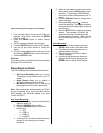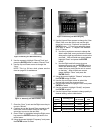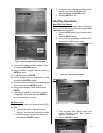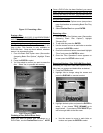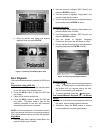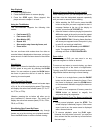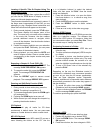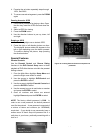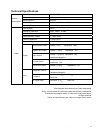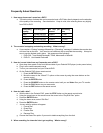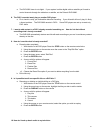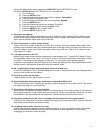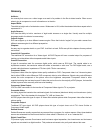- - 39
Digital Output:
The majority of all DVD players will have at least a coaxial or optical output for sending the Dolby Digital
bitstream to a Dolby Digital decoder. This decoder may be a stand-alone unit or built into a receiver.
Digital video:
A video signal represented by computer-readable binary numbers that describe colors and brightness levels.
Dolby Digital:
This proprietary technology is used to decode high-quality sounds from the DVD.
DVD:
Digital Versatile Disc, not Digital Video Disc.
Easter Eggs:
These are hidden features that many DVDs now contain and can usually be accessed via a hidden icon on a
menu.
Frame Rate:
Number of frames per second displayed in motion.
5.1:
The five indicates the number of sound channels available - in this case there would be front left and right, rear
left and right and centre. The number after the dot indicates sub-woofer support.
HDTV:
High Definition Television encompasses both analog and digital televisions that have a 16:9 aspect ratio and
approximately 5 times the resolution of standard TV (double vertical, double horizontal, wider aspect).
Horizontal Resolution:
The number of lines that run across the width of a TV. The bigger the number, the clearer the picture.
Standard VHS resolution - 220 horizontal lines
Laser disc - 425 horizontal lines
DVD - 480-500 horizontal lines
Layer:
All the information appearing on your screen is stored in layers. DVDs can be double sided (two layers).
Letterbox:
The use of upper and lower black mattes to keep films in their original aspect ratio.
Moire:
Circular lines that appear on television screens when they are filmed.
Optical Output:
In the case of DVD, this connection is used to connect the DVD digital output to a surround sound processor via
a TOSLINK cable to process DVD sound (Dolby Digital).
Parental Lock:
Allows users to block certain content
Pixel:
This is similar to PC monitors and measures the width by height of your display in pixels.
Progressive Scan:
A video scanning system that displays all lines of a frame in one pass as opposed to interlacing the lines
(alternating the lines, showing half of the picture each pass).
Regional Coding:
DVD players are hard-coded to accept DVDs that are only meant to be played within one of six designated
world regions. A Code 1 disc cannot be played in a Code 3 region for example. This technique was developed to
enable Hollywood companies to release movies at different times in different regions.



